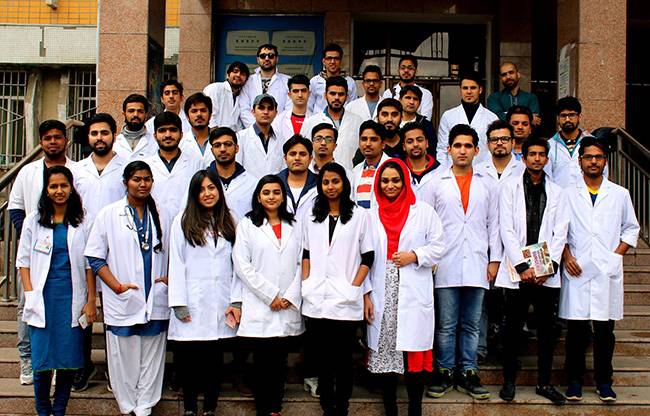
Introduction: A Big Step for India’s Future
The year 2025 will mark a turning point for India’s healthcare and education system. The Government of India, in partnership with the National Medical Commission (NMC) and state medical councils, has decided to add more than 10,000 new MBBS and postgraduate (PG) medical seats across the country.
This decision is not just about increasing numbers—it shows a bigger vision of making healthcare more accessible, creating better opportunities for medical students, and preparing the country to meet future health challenges. For lakhs of students preparing for NEET, this expansion comes as a huge relief. For the healthcare sector, it is a step toward building a stronger, healthier India.
Why Did India Need This Expansion?
1. The Population vs. Doctor Gap
India has a population of over 1.4 billion people, which means the demand for doctors is extremely high. The World Health Organization (WHO) suggests that every country should have at least 1 doctor for every 1,000 people. India has made progress toward this goal, but the gap is still wide—especially in smaller towns and villages.
By adding more MBBS and PG seats, the government wants to reduce this shortage and ensure that people in all corners of the country get timely medical help.
2. Too Many Aspirants, Too Few Seats
Every year, around 25–27 lakh students take the NEET UG exam. But until now, there were only about 1.1–1.2 lakh MBBS and BDS seats available. This meant only a small percentage of aspirants could get admission, while many equally hardworking students were left behind.
This shortage pushed thousands of students to either give up their dream or spend huge amounts of money studying abroad. The addition of 10,000+ seats in 2025 is expected to ease this pressure and give more students a fair chance to become doctors in India.
3. Strengthening Healthcare in Rural India
One of India’s biggest challenges is that doctors are often concentrated in metro cities, while rural areas remain underserved. With more seats being added in government medical colleges and new institutions in smaller districts, the government hopes to create more opportunities for students from rural backgrounds, who are more likely to serve in their own regions.
This will help ensure that villages and smaller towns also get better access to quality healthcare.
4. Making India a Global Healthcare Hub
India is already known as the “pharmacy of the world” for its medicine exports. Now, with better medical education opportunities, India also aims to attract foreign students for MBBS and PG programs. This not only boosts the country’s reputation but also helps create a global presence for Indian healthcare and education.
Where Will These New Seats Come From?
The additional seats in 2025 will be created through several measures:
New Government Medical Colleges – Many new colleges are being set up, especially in smaller districts.
Upgrading District Hospitals – District hospitals are being developed into teaching hospitals, directly creating more MBBS seats.
Expansion of Existing Colleges – Current government and private colleges are being allowed to increase their intake by 50–100 seats.
AIIMS and Central Institutes – Newly built AIIMS campuses across states will also add MBBS and PG capacity.
Private Sector Participation – Private medical colleges are being encouraged to expand, but with strict rules under NMC to maintain quality and affordability.
What Does This Mean for Students?
More Opportunities: With additional seats, students who missed out earlier will now have more chances to secure admission in India.
Less Pressure: Although NEET will still be competitive, cut-offs may come down slightly, making it easier for deserving candidates to get through.
Study in India: Families won’t need to spend lakhs on foreign universities. Students can get quality education in their own country.
More PG Specializations: With added PG seats, students will also have wider options in fields like pediatrics, radiology, cardiology, and oncology.
Impact on Parents
For parents, this expansion is equally important. Until now, many had to mortgage property, take huge loans, or send their children abroad for costly medical education. With more seats opening in India, parents will feel more secure about their child’s future—both financially and emotionally.
How Will This Change the Healthcare System?
More Doctors in Villages and Towns – With increased intake, more doctors will be available to work in rural areas, reducing the gap in healthcare delivery.
Better Public Health Services – Government health programs, vaccination drives, and rural clinics will get more trained manpower.
Improved Patient Care – More doctors and specialists mean shorter waiting times, faster treatment, and better overall patient care.
Boost to the Economy – Healthcare is one of India’s fastest-growing industries. With more professionals entering the field, hospitals, clinics, and research centers will grow, creating more jobs and opportunities.
The Challenges Ahead
While the move is promising, there are also some challenges:
Maintaining Quality – Adding more seats is easy, but ensuring enough faculty, modern labs, and proper patient exposure is critical.
Infrastructure Gaps – Many new colleges are still building their infrastructure. Without proper facilities, quality education could be at risk.
Brain Drain – Even with more seats, many doctors prefer to move abroad for better pay and facilities. India will need to create incentives to retain them.
Private College Costs – While the government is regulating fees, private education is still expensive for many families. Affordability remains a concern.
Government Support and Policies
To make this expansion successful, the government has rolled out several supportive measures:
Simplified NMC Rules: Approvals for new colleges and seat increases are now easier.
Central Funding: States get financial support to upgrade hospitals into medical colleges.
Fee Regulations: Caps on private college fees to make education more affordable.
Digital Health Integration: Training doctors in telemedicine, AI, and digital health tools to prepare them for the future.
How Students See This Change
For a student preparing for NEET 2025, the news of 10,000+ additional seats feels like a ray of hope. Imagine studying 10–12 hours a day for years, yet knowing that only 1 out of every 20 aspirants gets a seat. This expansion doesn’t remove the competition but makes the dream of becoming a doctor far more achievable.
How Parents Feel
Parents finally see better value for money. Instead of spending lakhs abroad or worrying about limited options, they can now look forward to quality medical education for their children within India. It also means more family support during education, less financial strain, and a brighter future close to home.
Looking Ahead
The addition of 10,000+ seats in 2025 is just one step toward a bigger goal. India wants to:
Ensure every district has a medical college.
Train doctors who are also researchers, innovators, and global leaders.
Make India a preferred destination for medical education, attracting students from other countries.
If these goals are achieved, India won’t just solve its own healthcare problems—it will also emerge as a world leader in medical training and services.
How Platforms Like Suganta.com Can Help Students
While government policies are opening doors through new MBBS and PG seats, students still face challenges in preparation, guidance, and career planning. This is where platforms like Suganta.com can play a big role.
Personalized Tutoring: Suganta helps connect students with experienced tutors, making it easier to prepare for tough exams like NEET with the right guidance.
Skill Development: Apart from entrance exams, students can use Suganta to improve essential skills like communication, research, and subject mastery that will help them in their medical journey.
Affordable & Flexible: Unlike traditional coaching, Suganta offers online learning support that is more flexible and cost-effective, making education accessible to all.
Creative Learning Support: With SuGanta International’s expertise in video content and training solutions, students can also benefit from innovative ways of learning—be it through video lectures, mock sessions, or interactive study material.
By combining the government’s step of adding medical seats with platforms like Suganta.com, the path for future doctors becomes more accessible, affordable, and effective.
Conclusion: Building a Healthier India
The decision to add over 10,000 MBBS and PG seats in 2025 is about much more than just numbers. It’s about giving every hardworking student a fair chance, ensuring that healthcare reaches every corner of the country, and preparing India for the challenges of tomorrow.
For students, parents, and the healthcare system, this expansion marks the start of a new era—one where dreams turn into opportunities and opportunities shape the future of a healthier India.





